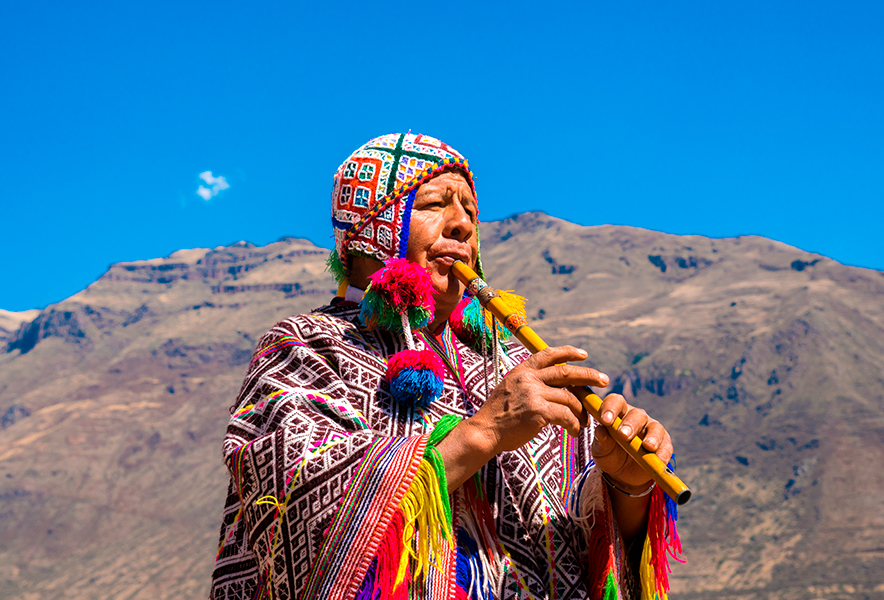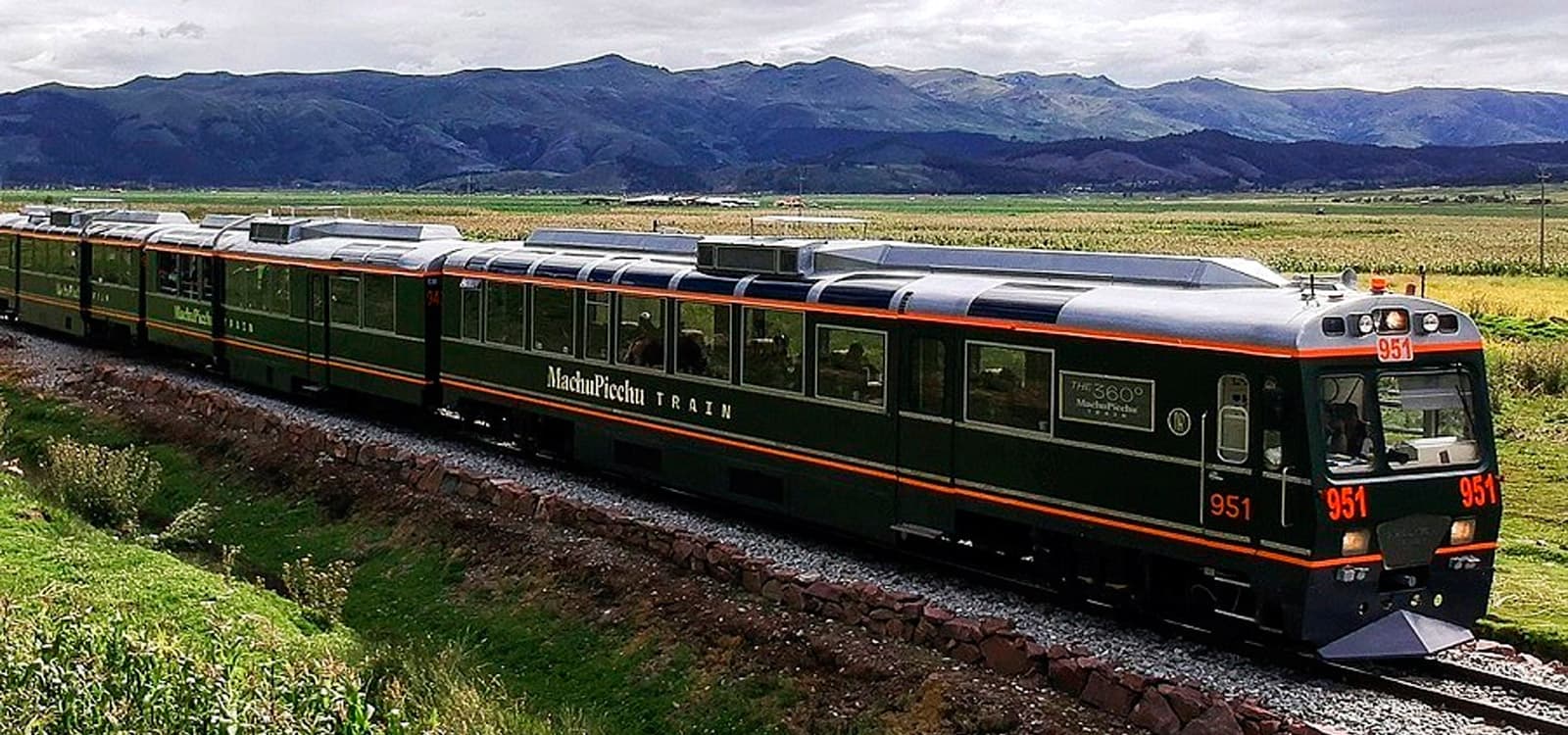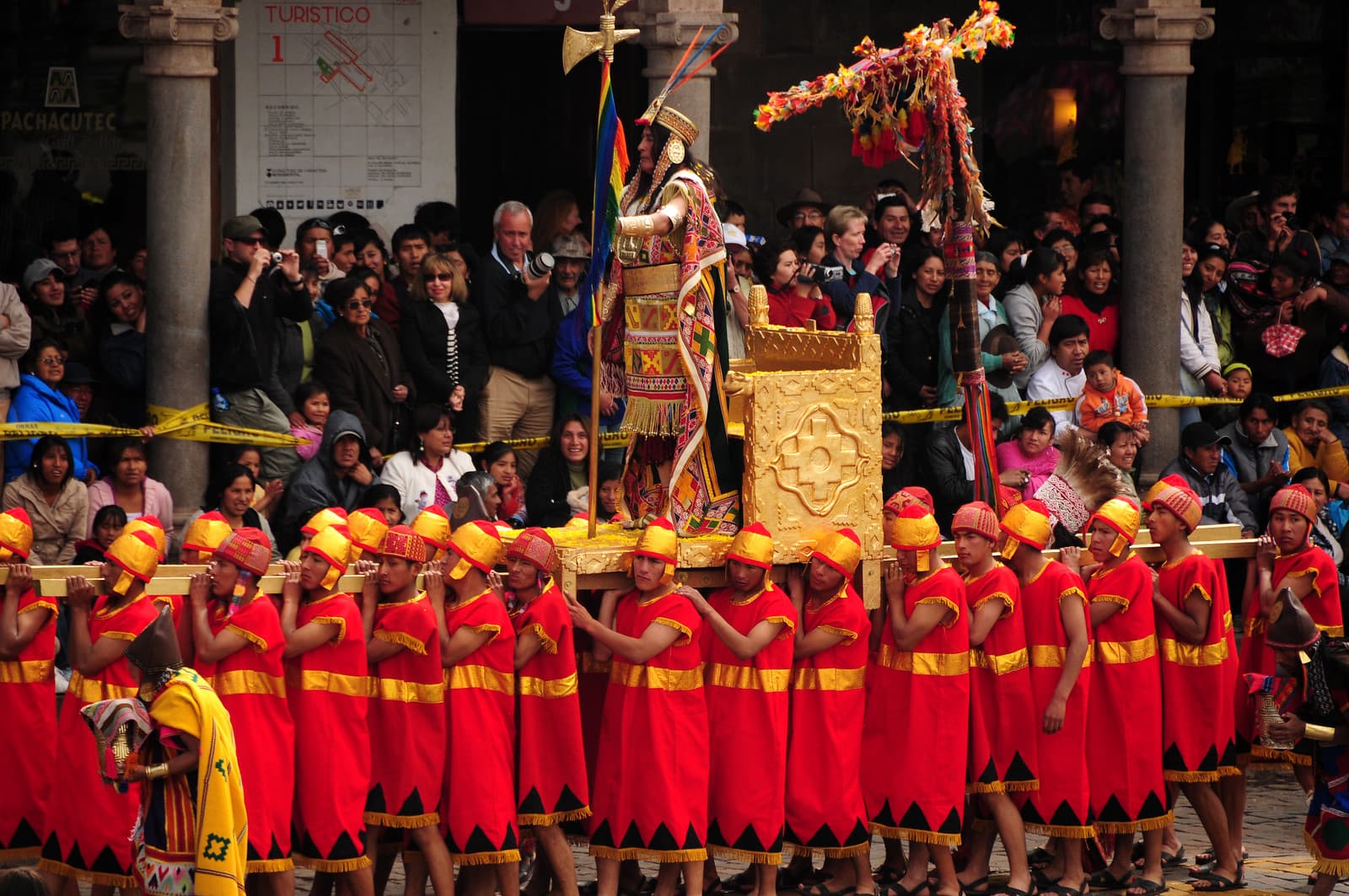INCA TRAIL TOUR | The # 1 Trek to Machu Picchu
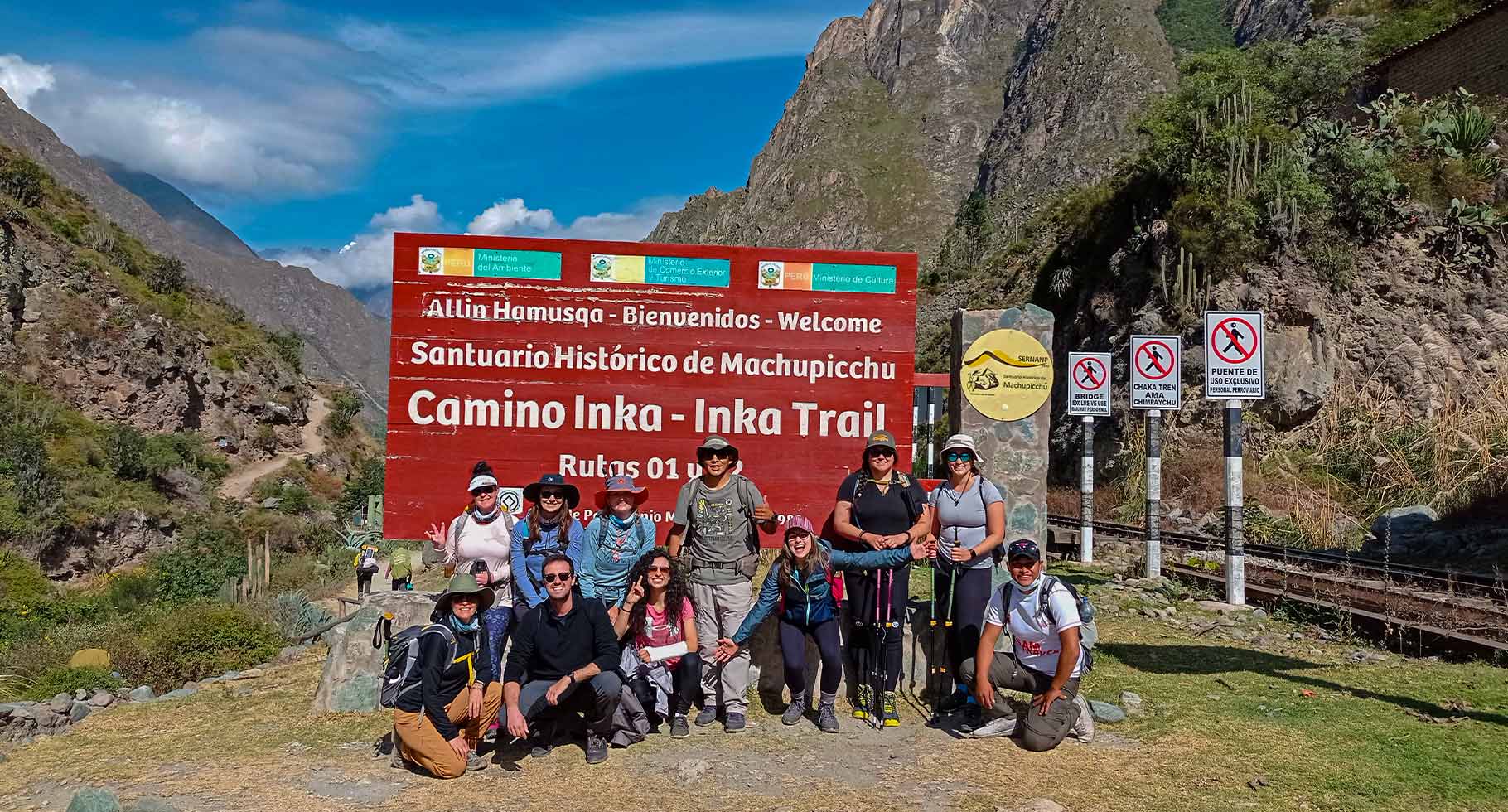
Machu Picchu is one of those bucket-list activities people dream about. While most people visit on a day trip, you can also visit via the Inca Trail, a challenging multi-day hike through the jungles of Peru. We have the best travel guide & tips and suggestions to help you plan your trip to Machu Picchu.
The Inca Trail is a network of ancient trails in the Andes Mountains of Peru that was once used by the Inca Empire to connect the empire’s capital in Cusco to the sacred city of Machu Picchu. The trail winds through the Andes and passes through several different types of terrain, including high mountain passes, dense forests, and cloud forests. It is approximately 26 miles (43 kilometers) long and typically takes 4 to 5 days to complete.
The Inca Trail has a long and rich history that dates back to the Inca Empire, which flourished in the Andes from the 12th to the 16th centuries. The Inca were skilled engineers and built a vast network of roads and trails throughout their empire, including the Inca Trail. The trail was used for ceremonial purposes and to transport goods and people between different parts of the empire.
The Inca Trail Tour is also rich in cultural significance, as it passes through several different indigenous communities and is home to a wide variety of flora and fauna. Many of the indigenous communities along the trail still follow traditional ways of life and maintain their own cultures and traditions.
Today, the Inca Trail is a popular tourist destination and attracts thousands of visitors each year. It is also an important source of income for the local communities and has helped to preserve the region’s cultural and natural heritage.
WHAT IS THE BEST TIME OF YEAR TO HIKE THE INCA TRAIL TOUR?
Peru has two seasons – dry and wet – and it is possible to do the Inca Trail in either. Each however, come with their own pros and cons.
Dry Season (May – October)
- Pros | The chance of rain, as the name would suggest, is significantly reduced and you can expect hot, dry mornings and afternoons.
- Cons | Dry season also coincides with high tourism season in Peru (June – August), so the Inca Trail will be at full capacity each day. This means fuller camp sites and more traffic along the Trail (although the tours do try and stagger this out).
Wet Season (November – April)
- Pros | A less popular time to hike, so the number of people you’re sharing the Trail with is notably reduced, as are the crowds at Machu Picchu. Tours are slightly cheaper and easier to book with only a few weeks notice (a guy on our tour booked his place only a week before the trip began). Temperatures at night are also less chilly.
- Cons | Hiking and camping in the rain for four days is never fun, so you are increasing the chances of that. If there is notable rainfall, then hiking conditions become slippier and more difficult.
Note that the Inca Trail is closed in February for everyone in order to allow it to replenish.
Classic Inca Trail to Machu Picchu ITINERARY
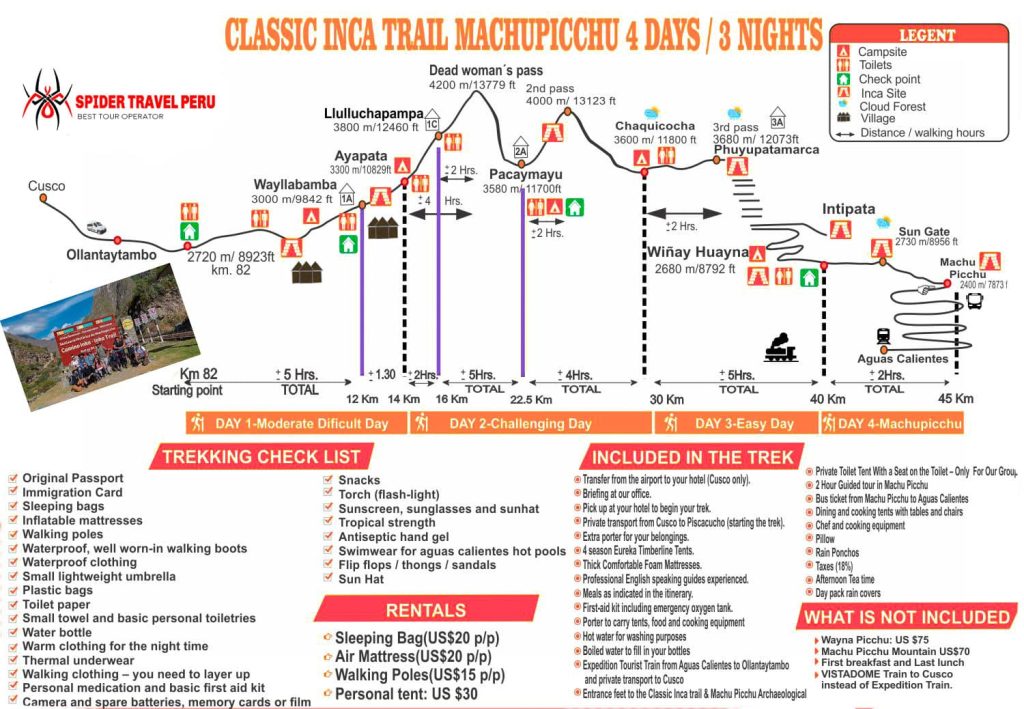
IMPORTANT:
- You can upgrade to the Vistadome Train for the same times, 2:55pm or 3:20pm, 4:22pm, or 4:43pm. The cost is $67 USD.
- Early trains can be organized by requested and it has to be done by booking time.
- The Huayna Picchu and Machu Picchu Mountain Hike depends on availability and let us know about it at booking.
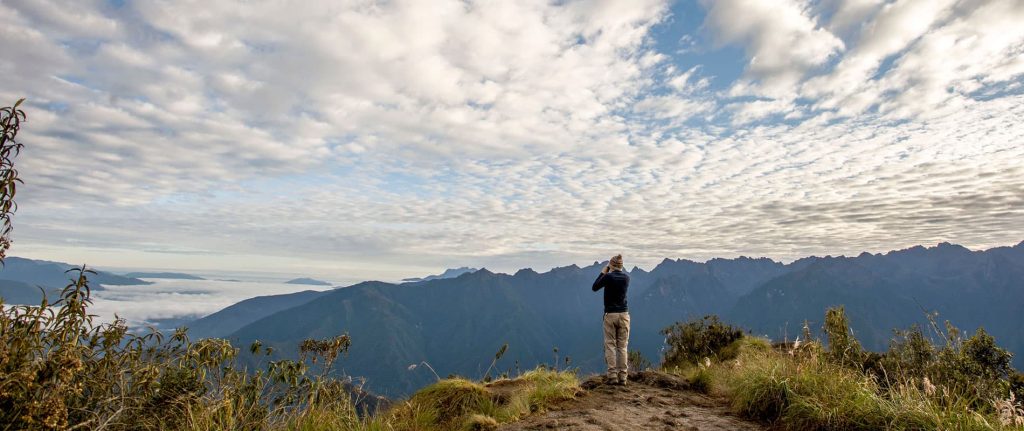
Inca Trail Permits Are Limited
Each day only 500 permits for the Inca Trail are issued by the Peruvian government. This total includes all the trekkers on the 2-day and 4-day routes as well as the guides, porters and cooks that accompany organized trekking groups. Available permits for the Inca Trail sell out quickly due to high demand, sometimes 5 months in advance for dates during the dry season from May to September, so booking far in advance is a must.
***The Trail Closes Every February for maintenace, conservation and clean-up
Required Items for the Inca Trail tour
Aside from packing list items you will need, here are important items that you must have:
- Documentation. Permission to enter the Inca Trail must be documented and you have to have it paid in full before entry. Only documents given by the Machu Picchu Historical Sanctuary Management Unit (UGM) are accepted.
- Passport. You need your passport to enter the trek and the ruins. Passport must match the name on your Inca Trail tickets and documentation. Tickets are 100% non-transferable.
- Reusable water bottle. Plastic is not permitted on the trail, so be sure to have a refillable water bottle to stay hydrated.
INCA TRAIL TOUR RECOMMENDATIONS
- It’s highly recommended to buy your tickets for the Inca Trail Tour in advance, Because permits can sell out several months in advance. Ask for it to Spider Travel Peru.
- We recommend spending a few days in Cusco before your inca trail trek begins to give your body plenty of time to get used to the high altitude. The highest mountain pass along the Inca Trail is at 13,830
- Go the extra mile for an amazing view of Machu Picchu, you can hike the extra hour to Huayna Picchu or Machu Picchu Mountain. If you want to climb one of them, you need to book in advance, 4 months at least. It costs $75.
- Don’t push yourself too hard to be the first one. Push yourself, but know your limits. It is normal for a group to get spread out and get at the campsite up to several hours apart. Walk at your own pace and save your energy for the next day instead of draining yourself on the first 13 km.
- We advise the following things to carry in your day pack: water, scarf, bandanna, raincoat, sunglasses, toilet paper, gloves, hat, first aid kit (some medicine and band-aid), bug spray, phone, camera, and Snacks.
- Clarify the size of your group. The size of your group can make a big difference. It is feasible to request a private Inca Trail trek. However, you are going to pay an extra cost.
- You can get your passport stamped with a unique Inca Trail and Machu Picchu stamp to commemorate the journey.
- Do carry some cash: you will use it to buy drinks until day 2, and to tip your porters, cook and Guide the last day.
- Do wear appropriate gear, good hiking shoes, technical pants, and a good rain coat are a must.
Packing List for the Inca Trail Tours
- Documentation.
Bring your original passport. You will need it both to start the Inca Trail Tour and to enter Machu Picchu through the Sun Gate. - Day Pack (30L)
Bring a comfortable daypack with snug straps to wear while you hike. SAM Travel Peru and most of the companies offer extra porter to carry you things too - Reusable water bottle.
Carry a reusable water bottle in your daypack. Another option is a hydration pack, like a CamelBak, which is a super convenient way to stay hydrated. - Clothing.
Layers, layers, layers. You’ll pass through many different climates along the trail and dressing in layers is important. Pack lightweight pants, short- and long-sleeve shirts, a warm fleece jacket, underwear, and socks. Temperatures really drop at altitude when the sun goes down. To stay warm, thermal undergarments, a warm hat, and gloves are recommended. - Footwear.
Comfortable hiking boots or walking shoes are a must. Also pack shower sandals. - Rain gear.
Be prepared with a rain jacket and pants or poncho. Rainy conditions aren’t to be expected during the dry season, but it’s better to be prepared. - Sun protection.
Pack a hat, strong sunblock, and glasses for protection against the sun. - Flashlight.
Headlamp (with extra batteries) or small flashlight to use at night while camping. - Comfort.
Light-weight travel towel to shower with and a small travel pillow for your sleeping comfort. Some trekkers may prefer to bring walking sticks, they are especially helpful in downhill sections. - Toiletries.
Toothbrush, toothpaste, travel shampoo, tissues, toilet paper, wet wipes, insect repellent with deet, and any personal medications. - Snacks.
You may want to bring extra (or diet specific) high energy snacks, such as some cookies, protein bars, chocolates, or nuts. - Money.
Bring local Peruvian currency (Soles) in your wallet so that you can tip your trekking team. - Camera.
Of course, don’t forget your camera, with extra battery packs and memory cards – No Electricity along the trek.
Tipping on the Inca Trail Tour
On the last night of your trek, there is a tipping custom: all the hikers put their tips together and give them to the guide. The guide will then distribute that money between all the Inca Trail personnel. We advise anything from $40 to $60 USD per hiker.
****The most recommended Inca Trail tour operators are: SAM Travel Peru, Orange Nation and Spider Travel Peru.
